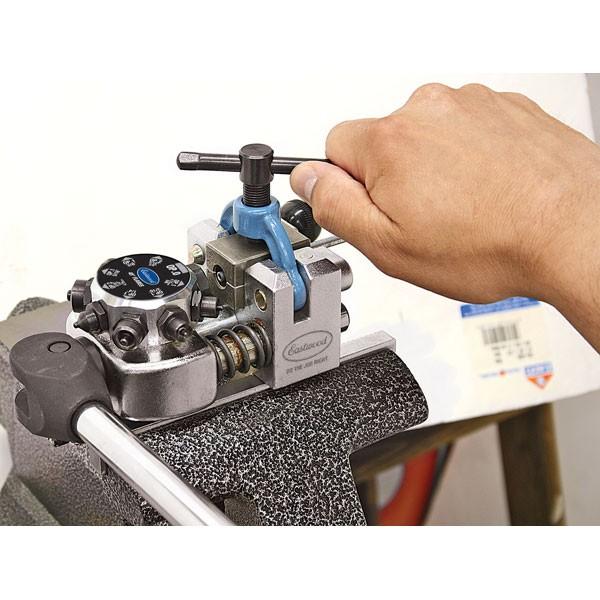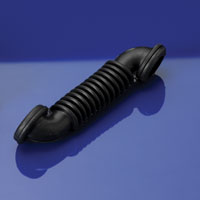Everything posted by zKars
-
Inner Tie Rod Alternatives for Z
Have to dig it up, but I bought a new (not reman) rack with inner tie rods from an outfit on ebay couple of years back. It was ~$275 USD back then. Why hunt for $200 parts? Oh yes, their ebay name is carsteering https://www.ebay.ca/usr/carsteering?_trksid=p2057872.m2749.l2754 Or https://www.jegs.com/i/Rare+Parts/202/RP26575/10002/-1
-
Problem With Differential Installation
Just cuz I'm in the mood to stir up trouble, I have an observation about this diff getting moved to solve a rear end vibration or u-joint wear issue. The 510 IRS has it's half shafts in the supposed "bad" position with the wheel hubs behind the diff flanges by just about the same amount as the early Z's had. Ie, half shafts not 90 to diff. Nothing was ever done or said about vibration problems or u-joints prematurely wearing out in 510s (and later 610s). Me thinks there is more to the Z issue than has been revealed. I smell a Gosher style cover up.... Back to regular programming....
-
correct torque, clutch bolts
Fresh lock washers (and correct torque) are your best moves to keep that clutch on there. Lock tite is overkill in this application. Won't hurt a thing if you use it.
- 1976 280Z Restoration Project
- 1976 280Z Restoration Project
-
Professional Brake Tubing Flare tool for sale
So I've been busy okay? But yesterday I finally got the eastwood tool out and have to report I like it more than the FedHill tool. Makes the same high quality flares, but it has features which makes it easier to use too. The clamp release is faster and easier to use, and the unique feature that helps you "zero" the tube position at the beginning of the operation is so slick. There is a flat face on the turret that you use to push the tubing flush with the die block, rather than the Fedhill tool that makes you either visually line it up, or use some other flat 'thing' to manually set the start position. It even breaks down for storage more easily. Pretty slick system. All this said, my Fedhill tool is pretty slick compared to most of the other tools out there. It's still available. While I'm here, I have to mention the tool I use when I have to make on-the-car flares. The picture of it below gives you the idea. It's well made, makes good flares. Eastwood has one, I bought mine from Ebay. Now if someone would come up with a system that reminds me to put the nut on the tubing, THEN make the flare...
-
Cody's Goon
Are you sure you have the right release bearing sleeve length? Do you have an adjustable length clutch arm rod? Ie arm with the hole in it that the slave rod pokes through?
-
Cody's Goon
The clutch may not be releasing completely if its hard to shift in all gears.
-
[SOLD] WTB carb spacers
I have a few of those. z240@shaw.ca and we'll get some on the way.
-
Triple SU set up at the Nationals
Still waiting for someone to do the six SU setup. Using the 38mm SSS carbs should be big enough. Then I'll be impressed.
-
WTB 510 door hinges
McMasterCarr.com has a poop load of springs. I've used an inner valve spring on my 4 door, it's close, but actually not stiff enough.
-
Pretty big day today 70 240Z
Whatever you use, make sure it's thin, 1/32 or so. Too thick and it will take up length and make it hard to start that J-bolt nut.
-
Internal rivets
Gave up on these rivets a long time ago. Now I install steel 10-24 riv-nuts and black oxide truss head machine screws. https://www.mcmaster.com/94779A620 Never lose the pins, panels are held down tight. Works great for black interiors, I guess you'd be painting heads for other color interiors. Black on white or blue or tan would look cool though wouldn't it? Yes you have to drill out each of the 5mm holes to whatever size the riv nuts need but once you do it you'll never baulk when you have to remove a panel to do any modifications (which we never do, right?)
-
1976 280Z Restoration Project
I had SS hose fittings in the heater in/out-lets. Both BSPT and NPT have 14 TPI for these 1/2 threads so it fits without drama. The 280's have the threaded heater hose fitting on the lower rad outlet, and the hole at the back of the head is always threaded, so it's an easy conversion. Makes it easy to put a simple brass plug in it.
-
Does somebody sell pre-bent brake/ fuel lines?
I seem to remember that classictube had SS lines? https://classictube.com/?s=Datsun&search_id=1&post_type=product
-
wiper motor bag/boot
As you mention, it is not sealed, it is just a deflector really for water entering from above. A carefully placed piece-o-something plastic above it, attached to the cowl would likely do just fine to deflect rain water. If you're wanting a real one, let me know,
-
Speedometer Pinion Gear Installation Help
I have to go take pictures of the finished product, but its just a small plate on each side that covers the gap. Spot welded to the center, two bolts into captured nuts on the outer part. You only need tensile strength here, that metal is so thin (that front bar that ties it into the lower valance is needed to keep the hood from bending the crap out of it), and your rad provides 95% of the strength in this area.
-
1976 280Z Restoration Project
It's a week for dispelling myths I see. First half shaft length difference, and now how grease works. I once believed that wheel bearings need to be filled with grease, including the dust cap. Have to keep grease around to replace what gets flung and maybe moved with heat and motion, right? Fill the bearings of course, and stuff as much in the cavities as you can. Tough to put in too much! At the same time I was doing more R&R's on rear bearings as well as fronts, and what struck me was the lack of grease in especially the rear housings. The bearings them selves were packed full of grease, quite often quite clean grease which I found surprising given that these were original bearings (spline nuts still had perfect factor peening). Maybe a light coat on the distance piec, but the cavity spaces are bone dry. But finally the light came on. Why in the world would you want grease that leaves the bearings with heat or centrifugal force and needs to be replentished by what's around? I cannot imagine a scenario that enables grease to move around in there and properly keep the bearings greased unless the entire cavity was packed full. Grease is actually designed to stay exactly where it is put and NOT to leave the bearing races at all under any but the most extremes of heat, up where metal starts to glow. The enemy of grease is moisture and dirt/grit/brake dust. If your seals are bad, that crap can get in there and destroy the bearing. I had a front failure due to a bad (ok, absent o-ring on the dust cap) and no wheel center caps that allowed crap to get in the bearing space and eventually lead to lock up and failure. My fault 100% as I was only putting grease on the bearings by this point,. So there IS a reason to put lots of grease in front of the spindle nut inside the cap, but it's mostly about a barrier to crap getting to the bearings. So there is no need to put grease anywhere but directly on the parts that touch and move. Once there, it does not move or migrate away. Any grease you put in that axle boot will stay right there and never contribute to the sliding joint. Might keep the boot soft and snuggly, but that's it.
-
Speedometer Pinion Gear Installation Help
But of course! It needs to come out at quite an angle, but it can be done. Bit tricky because of the steering link rod that gets stuck on the bell housing, but I done Mind you, the experience convinced me to make my rad support removable...
-
Speedometer Pinion Gear Installation Help
Two words. GPS speedometer...
-
1976 280Z Restoration Project
We 'know' the distance from the flange faces inner/outer on each side of the diff are different, as the Rxxx diffs are intrinsically wider on one side. The modern world (1980 and later) knows only of CV style joints that have very little in/out slop and have to be carefully sized to fit. Thus it was natural to assume that our lowly old school shafts would 'have to' be different lengths to 'work' in our unbalanced ancient hot rods. Wrong. Even when directed to the Z parts manual, where never the words 'left and right' could be found in the listings, they still disbelieved. What was never properly understood was the massive (by comparison) length variance our marvelous half shafts are able to supply. They do gum up, and often true that you can't compress them by hand all to the same length, or perhaps expand them to maximum for the same reason, which only added to the 'they are different' myth. And I've never heard of one breaking anywhere but at the u-joints themselves. Marvelous engineering indeed.
-
Quiet Muffler
Leon, that's the kind of real world testing and result we love to see. Can you get the part numbers for the Walker quiet flow muffler and the resonator they used? Then others can duplicate your success. I spent a ton of time on summitracings site going labouriously through the Quiet flow muffler assemblys looking at in/out sizes and placement as well as body dimensions trying to find one that might fit. Thanks!
-
Coilover Options (Updated 2017 Links, Cost)
Another option that is now available is Gecko. https://geckoracingusa.com/search?q=Datsun They have 240 (50mm ID) and 280 (54mm) weld on strut kits. I have their 510 front and rear kit. So far so good. Good choice of spring rates. 32 position dampening. Usual lack of shock damping information.
-
Rare Step Lights
My favorite wire run grommet thingy from Spal. http://www.spal-usa.com/power_lock_kits/automated/accessories/33040080.html
-
Rare Step Lights
They were in markets that required door lights. Not sure which ones those were, but there aren't many. North American was not on the list, and we know the number of cars that were not NA bound is quite small. There are fewer around than we would like.




 Subscriber
Subscriber





